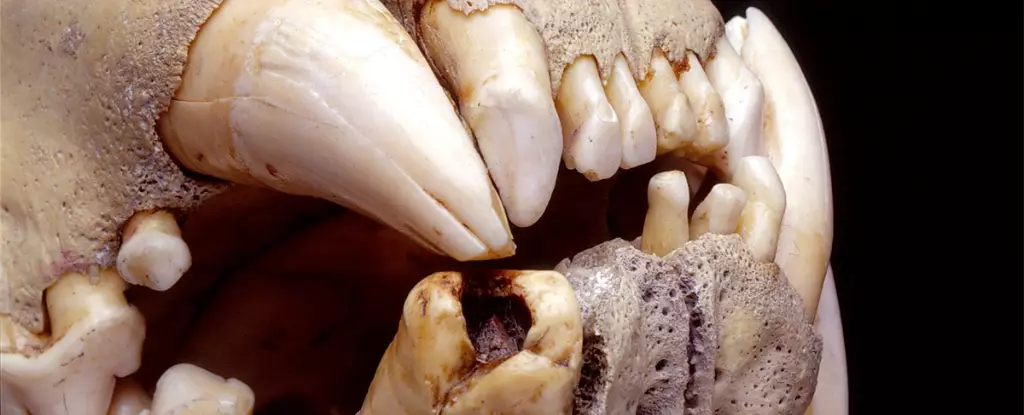The legend of the Tsavo lions, renowned man-eaters of the late 19th century, persists as one of history’s more chilling tales of wildlife interactions. These two male lions, which prowled the Kenyan region while railway workers toiled on the East African project, became infamous for their brutal attacks on humans. However, with technological advancements in genetics and archaeology, researchers are beginning to peel back layers of myth and reveal a more nuanced understanding of why these majestic creatures engaged in such horrifying behavior.
The saga of the Tsavo lions sprang to life in March 1898, coinciding with the arrival of Lieutenant Colonel John Henry Patterson. Charged with supervising the construction of a railroad bridge across the Tsavo River, Patterson initially treated reports of lion attacks with skepticism. However, the terrifying nature of the event soon escalated as he witnessed firsthand the audacity and ferocity of the two maneless lions. Despite an apparent lull in attacks, the eventual resurgence showcased these lions’ newfound boldness, leading to a deadly spree when they started preying on workers in camps over several months.
Patterson’s encounters with the lions provided significant detail about their behavior but did little to explain it. Over time, he and his companions executed a prolonged campaign to eradicate these formidable predators. The number of fatalities attributed to the lions remains uncertain, but estimates range drastically, highlighting the misconceptions that often accompany historical narratives surrounding human-wildlife conflicts.
Fast-forwarding to contemporary times, a unique initiative has emerged to utilize modern genetic techniques to analyze the remains of these infamous lions. Researchers recently examined hair samples embedded in the lions’ teeth to uncover their dietary habits. This analysis, spearheaded by a team from the U.S. and Kenya, has not only confirmed the presence of human hair but also identified various ungulate species, such as giraffes, waterbucks, and wildebeests, indicating the broader context of their diet.
This research utilized mitochondrial DNA (mtDNA) because of its stability in older samples. Such an approach allows scientists to delve into the diversity of prey consumed by the lions, thus contributing important insights into their predatory behavior. Interestingly, the findings elucidate a potential shift in feeding patterns driven by environmental factors.
The scarcity of typical prey, such as buffalo, in the lions’ habitat during the late 1890s offers a significant clue to their uncharacteristic predation on humans. The introduction of rinderpest, a viral disease that decimated local ungulate populations, led to a decline in preferred prey. Local buffalo and cattle were virtually eradicated, likely provoking the lions to explore alternative options.
Patterson’s notes reveal that he did not observe any buffalo or cattle during his tenure in Tsavo. This lack of natural prey would have forced the lions into an unexpected corner, making humans an easier target due to their presence in dense work camps. Thus, the Tsavo lions’ choice to hunt humans may have stemmed from a desperate need for sustenance in a rapidly changing ecosystem.
While shedding light on this fascinating yet grim chapter of history, the researchers have acknowledged the ethical implications of their findings. The team has consciously opted not to conduct further analysis on human hair samples, recognizing the potential for harm in identifying modern descendants of the victims. They emphasize community-based methods to focus on the relational aspects of the study, grounding their work in respect for the human lives that were lost during this distressing episode.
The story of the Tsavo lions transcends mere curiosity; it encapsulates the broader ecological and anthropological discussions surrounding human-wildlife interactions. The action taken towards understanding the motives behind these lions’ predatory behavior emphasizes the importance of connecting historical accounts with modern scientific inquiry.
The analysis of the Tsavo lions’ remains not only serves to demystify an iconic narrative but also provides invaluable lessons for conservation efforts today. Understanding the factors that influence predator behavior can lead to significant improvements in wildlife management strategies. Ultimately, as humanity continues to encroach on natural territories, these insights are crucial for fostering a sustainable coexistence between wildlife and local communities. By reflecting on the past and utilizing innovative research, it is possible to prevent tragedies like those of the Tsavo lions from recurring, embarking on a path toward harmony rather than fear.

Leave a Reply